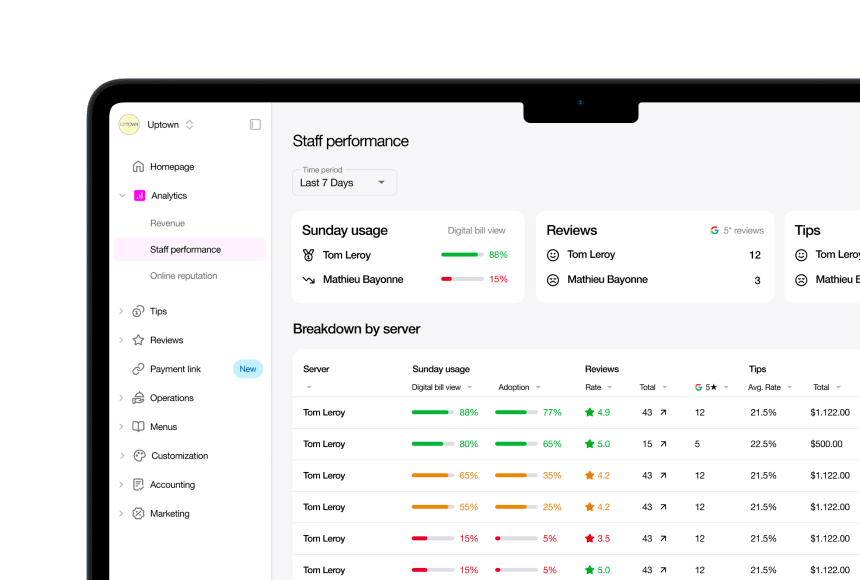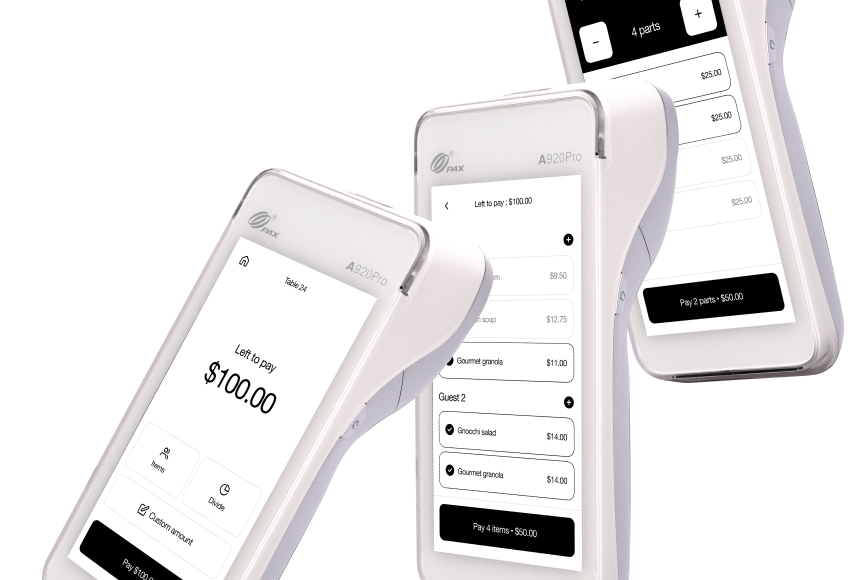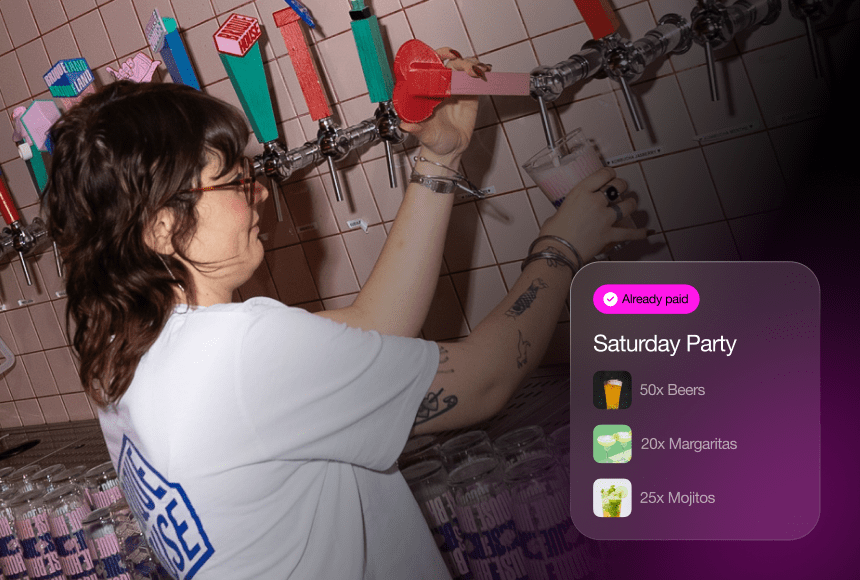
Creating a Motivated Staff with Clear, Practical Targets
Why Goal-Setting Matters More Than Ever
Running a restaurant can feel like conducting a symphony: every staff member has a specific role, and they all need to work in harmony for a smooth service. But if your goals and expectations are fuzzy, the harmony quickly breaks down. Servers might skip upselling that new cocktail, cooks may lose consistency, and shift managers could overlook crucial details—like ensuring quick table turnover.
That’s why well-defined performance goals aren’t just a nice-to-have. They’re essential to keeping everyone focused on what truly matters: offering top-quality dishes, excellent service, and a memorable experience. In this article, we’ll look at how you can set clear, realistic targets for your restaurant team, ensuring your staff feels motivated, your customers stay delighted, and your business stays profitable. Whether you’re running a cozy diner or a bustling, high-end spot, these principles will help you build a team that aims for consistent success.
1. Understand the Different Types of Performance Goals
Not all goals are created equal. Knowing which kind of targets to set can improve clarity and alignment across your team. Here are a few categories to think about:
- Sales Goals: These might include upselling appetizers or speciality drinks, reaching a certain average check size, or boosting take-out sales by a percentage.
- Speed and Efficiency Goals: Examples include reducing table turn times by a few minutes, cutting down on kitchen prep delays, or quickening the checkout process with tools like sunday.
- Quality and Guest Satisfaction Goals: Tracking average star ratings on Google or Yelp, or monitoring the number of repeat customers who rave about their experience.
- Team-Oriented Goals: Such as maintaining a certain tip pool average or ensuring everyone completes mandatory training modules by a set date.
Choosing which goals matter to your restaurant sets the foundation for everything else. Ask: “Do I want higher profitability, a better guest experience, or more staff cohesion?” Focus your targets around those priorities.
2. Keep Goals Specific and Measurable
It’s easy to say, “We want good service,” but that’s too vague to guide real action. Instead, opt for the SMART framework—goals that are Specific, Measurable, Achievable, Relevant, and Time-Bound:
- Specific: “Increase appetizer sales by 10%” is clearer than “Sell more appetizers.”
- Measurable: Quantify it—whether it’s a dollar amount, a percentage, or a star rating. Data keeps everyone accountable.
- Achievable: If you set unattainable goals, you’ll frustrate your staff instead of motivating them. Base the target on past performance and feasible improvement.
- Relevant: Make sure the goal ties back to your restaurant’s big-picture needs, like profitability or brand reputation.
- Time-Bound: Set a deadline—like the end of the quarter or a specific date—so there’s a sense of urgency.
By crystallizing your expectations, staff members know exactly where to direct their efforts, and you can celebrate concrete wins rather than vague accomplishments.
3. Involve Your Team in the Goal-Setting Process
Goals handed down from the top can feel arbitrary or irrelevant. To boost buy-in, involve your staff from the start:
- Host a Brainstorming Session: Ask servers and cooks what they see as the biggest bottlenecks, or where they believe the restaurant could improve. Their frontline insights are invaluable.
- Gather Feedback on Feasibility: If you propose speeding up average table turnover to 45 minutes, see if the kitchen or servers think it’s realistic or if they have suggestions for making it happen.
- Share the “Why”: Explain how hitting targets could lead to better tips, improved scheduling flexibility, or potential bonuses. When staff understand the personal benefits, they’re more likely to jump on board.
Co-creating goals with your team fosters ownership and reduces resistance. It also reveals which metrics truly motivate them—maybe it’s tip percentage or online reviews, rather than raw sales figures.
4. Leverage Digital Tools to Track Performance in Real Time
From ordering apps to POS analytics, restaurants now have a wealth of data at their fingertips. Harness that data to measure progress without drowning in spreadsheets:
- Automated Dashboards: Some point-of-sale systems or third-party software can show daily or weekly stats on average ticket size, number of covers, or even tip amounts. Share these metrics in staff huddles to make goals more tangible.
- Real-Time Payment Insights: If you integrate a solution like sunday, you can monitor how quickly tables settle checks, how often diners leave tips, and whether the team is improving those times or tips. This spurs healthy competition and immediate feedback.
- Checklists and Mobile Apps: Tools that let employees log tasks or check off daily duties can show you whether your new efficiency goals are being met. That’s especially useful in back-of-house processes.
Data-based feedback loops keep your staff aware of how they’re doing—without requiring managers to breathe down their necks. Transparency promotes accountability and friendly rivalry, ideally leading to better performance.
5. Offer Tangible Rewards That Matter
Hit the target, get a reward—simple in theory, but the specifics matter. Monetary bonuses can be powerful, but sometimes perks like flexible shifts or a special staff meal can mean just as much. Consider:
- Tiered Incentives: If they surpass 100% of the goal, maybe there’s a higher bonus bracket. This structure encourages pushing beyond the bare minimum.
- Experience-Based Rewards: Provide a staff outing, such as a wine-tasting day or a trip to another popular restaurant to learn best practices. This fosters team bonding and broadens culinary horizons.
- Spot Bonuses: If a server crushes an upsell target mid-month, reward them immediately. Quick recognition can fuel continued motivation.
Varying incentives keeps things fresh. Monetary bonuses can help pay the bills, but experiences, extra days off, or interesting skill workshops add a personal, memorable touch that fosters loyalty.
6. Align Individual Goals with Team Objectives
Restaurant success is rarely about a single star performer; it’s about a cohesive team. If each staffer is only measured on their own metrics—like a server’s average check—it might breed competition at the expense of teamwork. So find ways to balance personal ambition with group goals:
- Shared Tip Pools: Encourages servers to help each other because everyone benefits from collective performance.
- Team-Based Bonuses: If the entire front-of-house hits a target for nightly sales or guest satisfaction, everyone gets a slice of the reward. That fosters collaboration and mutual support.
- Back-of-House Collaboration: Recognize that a line cook’s efficiency helps servers turn tables faster. Consider cross-department incentives, so the kitchen staff also reaps rewards when the dining room achieves speed or satisfaction milestones.
By combining personal metrics with shared objectives, you ensure no one’s success undermines the collective effort. Instead, it brings your entire crew closer to the finish line.
7. Keep the Targets Dynamic
The restaurant business changes from season to season, if not week to week. A blanket goal set in January may not fit your needs come summer. So consider adjusting or rotating targets to keep momentum:
- Seasonal Focus: Maybe in winter, you want to push your warm drink specials. In summer, it could be about refreshing cocktails or salads. Pivot your goals to match the season’s trends and inventory stock.
- Monthly Check-Ins: Evaluate whether your staff is easily surpassing their goals or struggling to meet them. If a target becomes too easy, it ceases to motivate. If it’s too hard, it can discourage people.
- Respond to Feedback: Don’t cling to a stagnant goal out of pride. If employees suggest a more relevant metric or approach, remain flexible and pivot. That willingness to adapt shows you trust their on-the-ground experience.
Dynamic goals ensure you and your team remain agile—ready to capitalize on new dish ideas or respond to evolving diner preferences.
8. Address Obstacles That Block Goal Achievement
Sometimes staff fail to meet targets not because they’re unmotivated but because structural issues stand in the way. If the kitchen is short-staffed or technology is clunky, even the best server can’t boost average check size. As a manager:
- Identify Bottlenecks: Is the bar backed up? Are outdated payment methods slowing checkouts? Fixing these friction points might drastically raise performance by default.
- Provide Continuous Training: If you want upselling, give your servers knowledge of the menu and confidence in describing dishes. Or if you emphasize table turnover, train them on quick greeting and efficient ordering systems.
- Use Staff Input: They’ll likely know exactly what stands in their way. Perhaps a simpler ordering system, like scanning a QR code through sunday, could instantly help them focus on personal interactions instead of manual tasks.
Empowering your staff also means ensuring they have the resources to deliver. If your line cooks lack needed equipment or a server lacks a stable payment terminal, no performance goal will realistically succeed.
9. Communicate Progress and Celebrate Wins
Motivation can fade if employees never see tangible proof of advancement. Regular updates spark healthy competition and keep the team aware of how close they are to hitting that goal:
- Post Metrics in a Shared Space: A simple wall chart or digital display with weekly progress can keep everyone’s eyes on the prize. It might show cumulative sales, tips, or average star ratings.
- Quick Pep Talks: Kick off shifts by noting how the day compares to the monthly goal. If you’re on pace or ahead, cheer them on. If behind, suggest a push on upselling or mention which specials to highlight.
- Celebrate Milestones: Did you hit 50% of your target halfway through the period? Mark the moment with a staff meal or high-five each team member who contributed significantly.
These micro-celebrations, combined with constant feedback, keep the momentum rolling. People stay excited about the finish line, rather than losing heart mid-race.
Long-Term Impact: Boosted Retention and a Happier Crew
Setting the right performance goals is about more than short-term gains like higher wine sales. It directly influences your restaurant’s culture—and that’s key in an industry known for high turnover. When employees believe they can achieve meaningful targets, see how their efforts contribute to success, and get rewarded fairly, they’re less likely to wander off to the next restaurant across town.
Instead, they become ambassadors of your brand. They recommend your place to friends, stay for the long haul, and grow within your company. In short, the entire cycle of hiring, onboarding, and training new staff slows down, saving you time and money while preserving a cohesive, experienced team.
At the end of the day, well-defined performance goals form one piece of a bigger puzzle that includes compensation, culture, technology, and leadership. By focusing on clarity, measurability, and regular feedback, you’ll keep your staff engaged and your customers satisfied. Your servers won’t just serve—they’ll strive. And that’s the ticket to thriving in today’s competitive restaurant landscape.
So, if you haven’t yet, take a close look at the objectives you’ve set for your team. Are they specific, rooted in real data, achievable, and aligned with your broader strategy? If not, it’s time to revise. You’ll be amazed at how quickly motivation picks up—and how much your bottom line will appreciate it.
Find out more today
Drop us your details below and we’ll reach out within the next 24h
Get the full, detailed picture.
sunday elevates your business with insightful data, instant feedback and precise analytics.



